This weekend, the 30th annual Show-Me State Games were held in Columbia, Missouri. The Games are the state’s Olympic-style sporting event consisting of more than 40 sports with participation from amateur athletes of all ages and abilities.
The cycling portion of the games consists of a road race with two route options; riders can choose from a 20 or 30-mile route. Both routes are on open country roads with very little climbing and low traffic. Riders compete in either 5 or 10-year age groups, with medals given to the top 3 finishers in each age category.
Usually, the riders are split into two or three groups of combined age categories. This year, the riders (on each route) were grouped in one large mass-start. While this allowed for a larger field to work together, theoretically, it created some issues that will be addressed later.
The race began with temperatures in the 60s and no wind, except for a slight breeze from the south. The racers headed north at a steady, but not hard, pace. The road conditions were pretty bad. The pavement was so rough that at least 3 or 4 water bottles went flying out of cages on the first stretch of road. Luckily, nobody hit them, and they went down.
The road began to head east, and the pavement smoothed out a bit. Still, nobody seemed interested in pushing the pace, so I decided to put in the day’s first attack. With no real need or desire to stay off the front solo for the rest of the race, my only ambition was to force the riders to pick up the pace and chase, hoping the field would thin out a bit with the effort. One rider from Big Tree jumped soon after my attack to bridge the gap. Once he was on my wheel, I had him pull through to share some of the pace-making. We had a generous gap on the field, but he was not willing or able to keep the pace high enough to push our break as hard as necessary to stay off the front. After about a mile or so, a rider or two went to the front of the group behind us to pick up the pace and work on bringing us back. I kept the pace just high enough to make them work for the catch and shut it down once they came close enough to reel us in.
As soon as we were back in the field, I realized that while the effort had shed a handful of riders, there were still way more people in the field than I had wanted. I immediately sent one of my teammates, Kevin Temple, on the attack. He jumped off of the front of the pack and put in an excellent, solid effort. Several riders responded quicker than they had when I jumped, and they worked on bringing him back quickly.
We hit our next turn soon after Kevin was caught and began to head south. Several of our Team Prologue members went to the front and continued to work to keep the pace up a bit. Over the course of the next few miles they put in some excellent efforts and pulled the group along with help from a few other riders. One Big Tree rider tried a break but was brought back into the field without much issue. Another break went away, and three of the six riders were my teammates. Kevin Temple, Greg Swetnam, and John Cole gained a little ground over the rest of the field and quickly tried to put together a pace line with the other three riders to make the break stick. However, the other three riders would not contribute to the break, and our team members decided not to pull the other three along for the ride. The group was brought back, and the field was once again together. Kevin and John went back to their pace-making on the front of the group.
I quickly realized that with no climbs or winds to split up the field, we would have a lot of passengers in the race. More than half of the field was sitting in, not willing to do any work, and the only other team with a good contingent of riders, Big Tree, was not willing to do their share of the work-load to try and make the race, so I went to the front and shut-down my teammates, telling them to pull off the front and force some others to take part in the pace-making. If the field was going to refuse to work and ride at 5 miles per hour, then we were going to ride at 5 miles per hour.
The course turned west along the I-70 outer road, and the pace finally picked up a bit. Other riders began to do some work, and a few tried to get off the front, but nobody was able to establish any real break. About halfway to our last turn, a rider in front of me either had his chain slip or hit a hole and came very close to coming down. He would have most likely taken me out as well, but he was able to recover without incident.
We made the final turn with about 2.5 miles of road in front of us to the finish. I was further back in the field than I wanted to be when a rider from Big Tree attacked to try and solo for the finish. This is where the problems started. Once again, no riders were willing to try and work to bring him back. I worked my way to the front and asked Kevin to head to the front to pick up the pace. A few riders came around him like they were going to start working to make the catch and almost immediately sat up and started soft-pedaling. In doing so, they blocked the entire road, preventing anyone who wanted to do some work from getting around them.
It was clear that everybody in the field was going to let him ride away. I yelled for the four riders blocking the front to start working or get out of the way and finally picked my way past them to make a jump for the lone rider off the front. I made a hard jump with about a mile to go and started to close the gap. My legs hadn’t felt very good since I had been off of my training for two months. With about 200 meters to go, I could feel myself fading and almost gave up, but I forced another surge from my legs and passed the rider about 5-10 meters from the finish. Though I was not very happy with all of the negative racing, I was happy that I was able to defend my title.
The rest of the team did very well. They had done a ton of work throughout the race and were all right there for the finish but this is where the problems, mentioned earlier, came to light. The course was on the open road which meant the yellow-line rule was in force, even for the finishing sprint. However, having all of the racers start as one mass group on a non-selective course meant that almost all of the riders were left to participate in a sprint on a road that could, at best, support 3-4 riders across in a sprint finish. This also means that riders that were not skilled enough, or strong enough to contest the finish were still there at the finish. So confusion about who (your age group competitors) you were sprinting against combined with no room to maneuver through the field created confusion and a bit of a dangerous sprint situation. Luckily, nobody went down and everyone made it safely across the finish even though many riders just had to sit up and soft-pedal the final meters. Considering the constraints of the finish area, future editions of the race should probably go back to the old format of splitting the field into two or three groups on the road to ease the congestion.
But the mass start and tight finishing straight were not completely to blame for the confused and cramped finish. The riders themselves were culpable as well. By racing negatively and not pushing the pace over the 30 mile course to thin out the group, they created a situation in which way too many riders made it to the finish. The field should have been, at most, half the size that it was when it came to the finish. This would have created a safer finishing sprint and allowed more room and a safer sprint.
Overall, The Show-Me State Games Road Race is a great event, especially for those new to racing looking for a low-key event. The volunteers are always great to deal with and very pleasant.

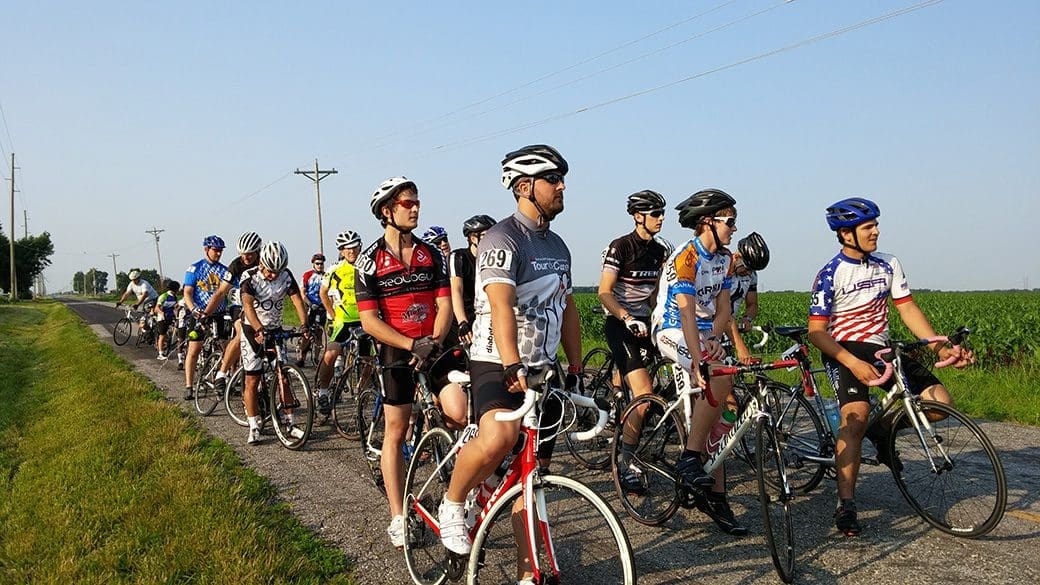

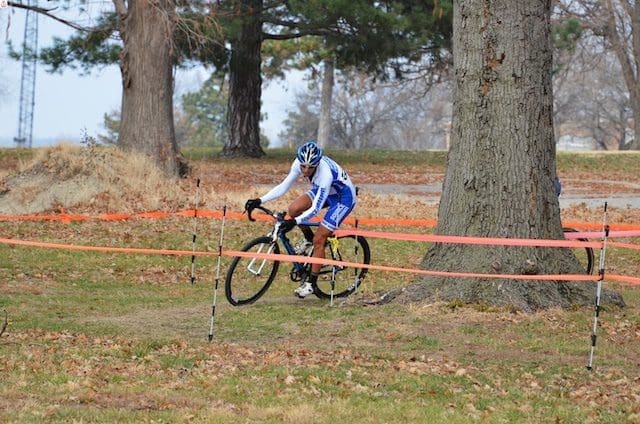
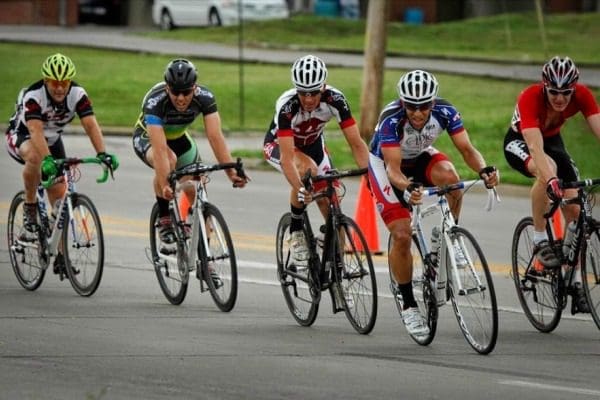




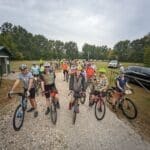

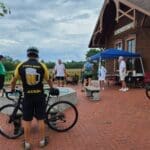




Trackbacks/Pingbacks